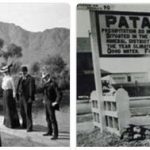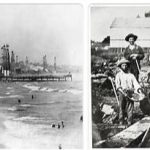The sun shines bright on my old Kentucky home, ‘It’s summer, the people are gay; grain top ready and meadow in flower while the birds make music all day. Lyrics and music from “My Old Kentucky Home”, by Stephen Foster.In the mid-1700s, the French, Spanish, and English began to explore this land of green hills, mountains, valleys, and mighty rivers, and their collective journals indicate that there were no permanent Indian settlements in the region.
Scattered groups of Shawnee and Cherokee tribes did hunt the area, but as the early Boy Scouts crossed this land, there were few initial problems with the Indians. However, as the British and French fought for control of North America, the resulting French and Indian Wars (1754-63) temporarily curtailed additional exploration.
Daniel Boone, an early frontiersman, began exploring the Kentucky area in 1767, and tales of his travels and subsequent legend inspired many settlers to move in. As those pioneers crossed the Cumberland Plateau, the Indians began to fight back as they were now losing their ancestral hunting grounds to intruders.
In 1772, George Rogers Clark left his family home in Virginia to work as surveyor for the Ohio Company. Clark’s trip took him along the Ohio River, and on into the Kentucky Territory. Over the next four years he was a guide for the settlers, and with family and friends established communities such as Liesburg, now part of Frankfurt.
In 1776, Kentucky was made a county of Virginia. Its scattered population needed protection, and with the American Revolutionary War in its early stages, Virginia could not adequately provide it. Isolated settlers and hunters became the target of Indian attacks and many were evicted leaving only a handful of hardy souls behind.
Near the end of the Revolutionary War, a fort was built at Lexington to defend against the British and their Indian allies. As it turned out, the ” Kentucky Battle of the Blue Lick” was one of the last major battles of the Revolution.
At the end of the war, Kentucky wanted statehood, and a series of agreements were carried through (1784–91). The controversy was commonplace as some attendees suggested a split from Virginia, and even(if necessary) from the United States.
A constitution was finally agreed upon, and on June 1, 1792, the US Congress adopted the Constitution of Kentucky and admitted it as the 15th state; Isaac Shelby was elected governor and Frankfurt was chosen as the capital.
Settlers returned in large numbers and farms sprang up across the state. With rich soil providing the base, successful corn, tobacco and wheat crops (year after year) put Kentucky into economic overdrive. By the turn of the century, bourbon distilleries were in operation, and the city of Bardstown would become the de facto capital of Kentucky’s (world famous) signature drink.
In late 1811 and early 1812, southwestern Kentucky was hit by a series of large earthquakes, the largest recorded earthquake series (ever) in the contiguous United States. Among other damage, earthquakes caused the Mississippi River to change course, thus creating the Kentucky Bend.
Across America, the plight of black slaves in southern states has been an ongoing contentious issue. On small farms across Kentucky, slaves were not originally needed nor used, and in fact, starting in 1833, the importation of slaves into the state was prohibited. That attitude last changed, and by 1850, Kentucky was an active slave state and a significant slave market for Southern states.
Timeline of Kentucky
1600s – 1700s
- (1654) Virginian colonel Abram Wood, surveyed area
- (1720s) French claimed most of the land, established trading posts with the help of local Indian tribes
- (1739) Captain Charles de Longueil of France discovered the Great Bone Lick
- (1750) British representative, Dr. Thomas Walker, explored the area through the Cumberland Gap
- (1751) Christopher Gist explored the Ohio River
- (1754 – 1763) French and Indian War
- (1767) Frontiersman Daniel Boone, John Findlay traveled to Kentucky via the Cumberland Gap
- (1774) James Harrod built first permanent Kentucky settlement at Fort Harrod; the Indians forced the settlers to leave
- (1775) Agreement regarding the Plane Shoals signed by the Cherokee Country and the Transylvania Land Company (Richard Henderson & Company) for the purchase of land between the Ohio and the Cumberland Rivers
- (1776) Virginia declared the Transylvania Land Company illegal; formed county of Kentucky
- (1778) Shawnee Indians attack Boonesborough Fort, siege lasts 13 days
- (1780) Virginia divided Kentucky County into three separate counties: Fayette, Jefferson, Lincoln
- (1782) Last battle of the American Revolution fought at Blue Lick
- (1783) First commercial distillery opened
- (1792) Kentucky became the 15th American state
- (1795) First barrel “Old Jake Beam Sur” introduced by the Beam family
- (1796) Wilderness Road opened to wagons
- (1797) Mammoth Cave main section discovered by Robert Houchins
s1800s
- (1811) Devastating earthquake strikes far western Kentucky; First steamboat on the Ohio River stopped in Louisville
- (1812) Eathquake occurred; tidal waves created on the Mississippi River, the river flowed backwards, created the Kentucky Bend, formed the Reelfoot Lake area
- (1818) Western Kentucky purchased by President Andrew Jackson from the Chickasaw Indians (Jackson Purchases)
- (1819) First commercial oil well opened on the Cumberland River
- (1821) First advertisement for bourbon, printed in the Western Citizen’s Gazette in Paris, Kentucky
- (1830) Louisville and Portland Canal opened
- (1861) Kentucky declared neutrality in civil war, issued a proclamation asking both sides to stay off Kentucky soil; supplied approximately 86,000 troops to the north, 40,000 to the south; Fort Jefferson is one of the first Kentucky states occupied by Allied forces; Kentucky became the 13th Confederate State
- (1862) First battle of the Kentucky Civil War fought near Prestonburg; The Battle of Perryville was the bloodiest battle of the Kentucky Civil War; Kentucky under Union Army control for the remainder of the Civil War
- (1867 – 1881) Ku Klux Klan active in Kentucky; many incidents of shooting, lynching, throwing blacks
- (1870) Shipment of jugs of bourbon from Ohio River ports began
- (1875) First Kentucky Derby takes place at Churchill Downs
- (1891) Current State Constitution passed
- (1892) Kentuckian Nathan Stubblefield invented the radio
1900s
- (1900) Over 1,500 armed civilians took control of the Capitol within two weeks; governor declares martial law, activates Kentucky militia; Governor William Goebel, shot dead by an assassin
- (1905 – 1909) Black Mask War – farmers burned barns and fields belonging to big tobacco interests; complete tobacco-buying monopoly
- (1921) Law met permission women to serve on a jury
- (1920 – 1933) Prohibition – The 18th amendment passed the manufacture of prohibition, the sale of alcohol; hundreds of companies closed; bourbon distilleries closed; the government issued 10 licenses to produce whiskey for medicine
- (1926) Mammoth Cave National Park established
- (1933) Tennessee Basin Authority (TVA) began building levees in Kentucky
- (1936) Last legal public hanging in Kentucky happened
- (1937) American Gold Vault established at Fort Knox; the Ohio River floods the devastating damage done
- (1944) Kentucky Dam completed
- (1950) Built an atomic energy plant near Paducah
- (1958) School bus collided with intruder’s truck submerged in river, driver and 26 children drowned
- (1959) Cumberland Gap National Park is dedicated
- (1966) Kentucky first southern state to pass comprehensive civil rights law
- (1969) Steam generator set built in Paradise
- (1977) Fire at the Beverly Hills Dinner Club in Southgate killed 165, injured over 200
- (1988) Intoxicated driver hit bus carrying youth group; disaster and fire killed 27; Voters approve state lottery
- (1997) Student at Wasteland High School opened fire on fellow students, three killed, five injured; a study conducted by NORML found that Kentucky produced 800,000 marijuana plants annually, with a value of over $1.3 billion
- (1998) University of Kentucky won the NCAA Basketball Championship
2000s
- (2005) S. Supreme Court indicted display of Ten Commandments in two Kentucky courtrooms
- (2006) Comair flight crashed near Lexington, 49 killed
- (2010) Tea Party nominee, Rand Paul, won the primary Senate of the Republic
- (2010) A Man Killed Five People, Himself in the Breakfast Argument
- (2010) Five US military members from Fort Campbell 101st Air Combat Brigade killed in helicopter crash in Afghanistan
- (2010) Five US military members from Fort Campbell 101st Air Combat Brigade killed in helicopter crash in Afghanistan
- (2011) Australian man held in Louisville on charges of grabbing fake bomb around Sydney teen’s neck
- (2012) Series of violent storms and tornadoes killed 12








